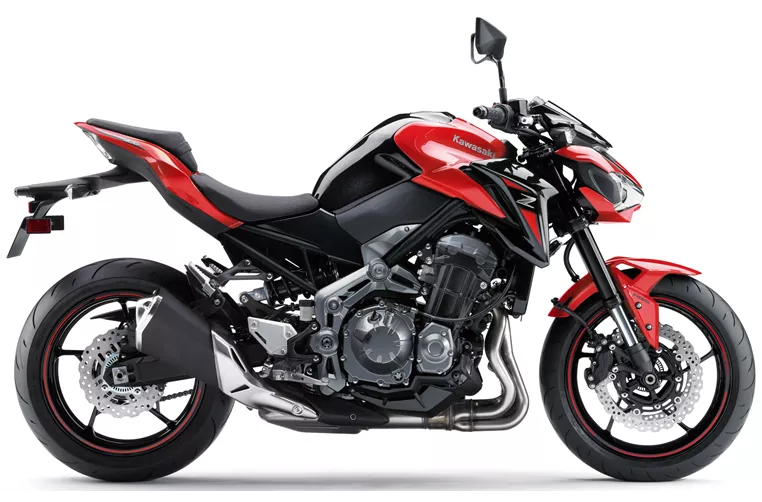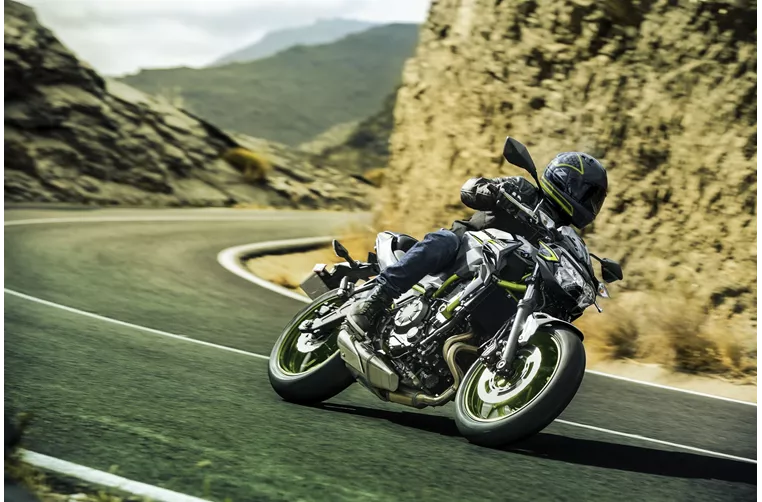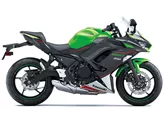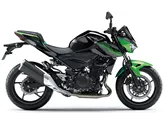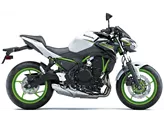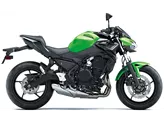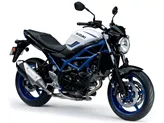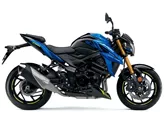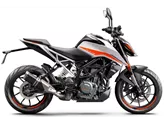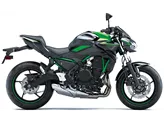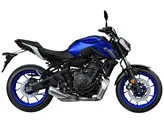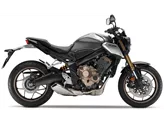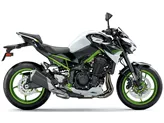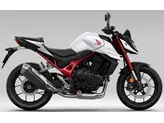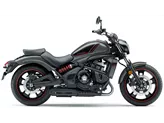Kawasaki Z900 70kW 2018 vs. Kawasaki Z650 2021
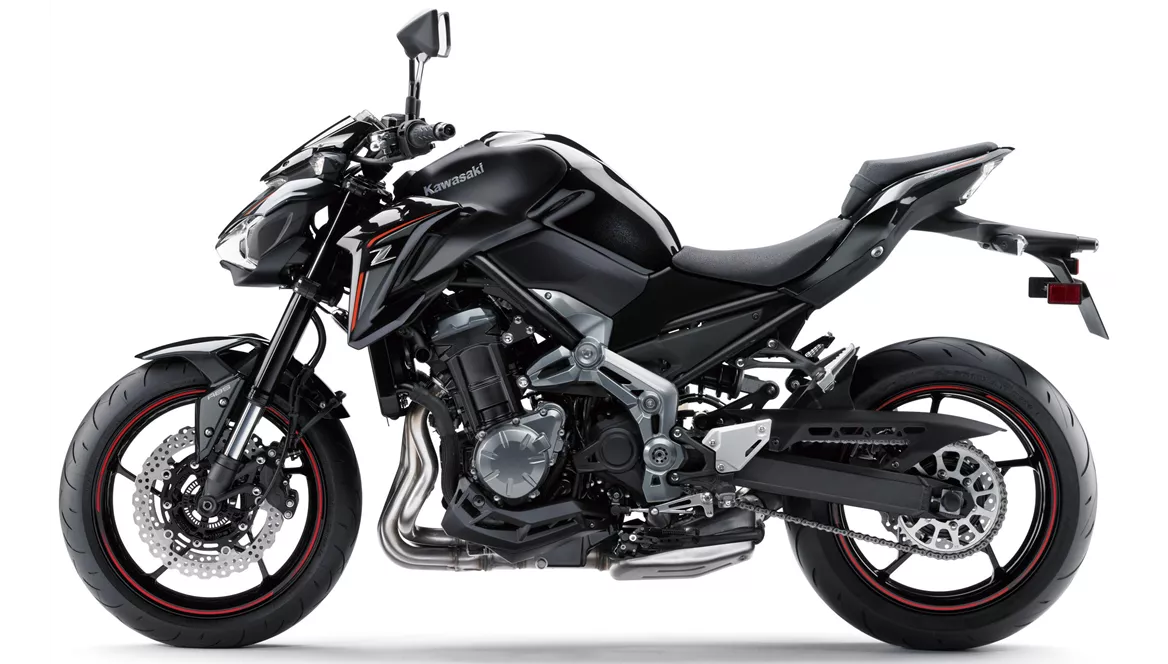
Kawasaki Z900 70kW 2018

Kawasaki Z650 2021
Overview - Kawasaki Z900 70kW 2018 vs Kawasaki Z650 2021
The Kawasaki Z900 70kW model year 2018 and the Kawasaki Z650 model year 2021 are both naked bikes from Kawasaki, but they have some key differences in terms of specifications and strengths.
Starting with the Kawasaki Z900 70kW 2018, it is equipped with a powerful in-line 4-cylinder engine that produces 95 HP of power and 91.2 Nm of torque. The engine is known for its smoothness and punch at around 6000 rpm. The bike has a fuel injection system and a displacement of 948cc. The cooling system is liquid-based, ensuring efficient heat dissipation. The Z900 70kW features a double cradle steel frame, which provides stability and rigidity. The front suspension is an upside-down telescopic fork, while the rear suspension is a swing arm with a monoshock. The suspension can be adjusted for preload and rebound. The bike is equipped with double disk brakes at the front, with a diameter of 300mm and four pistons. The braking technology used is petal. The Z900 70kW also features ABS as an advanced rider assistance system. The front tire width is 120mm, and the rear tire width is 180mm. The wheelbase is 1450mm, and the seat height is 795mm. The bike has a kerb weight of 210kg with ABS.
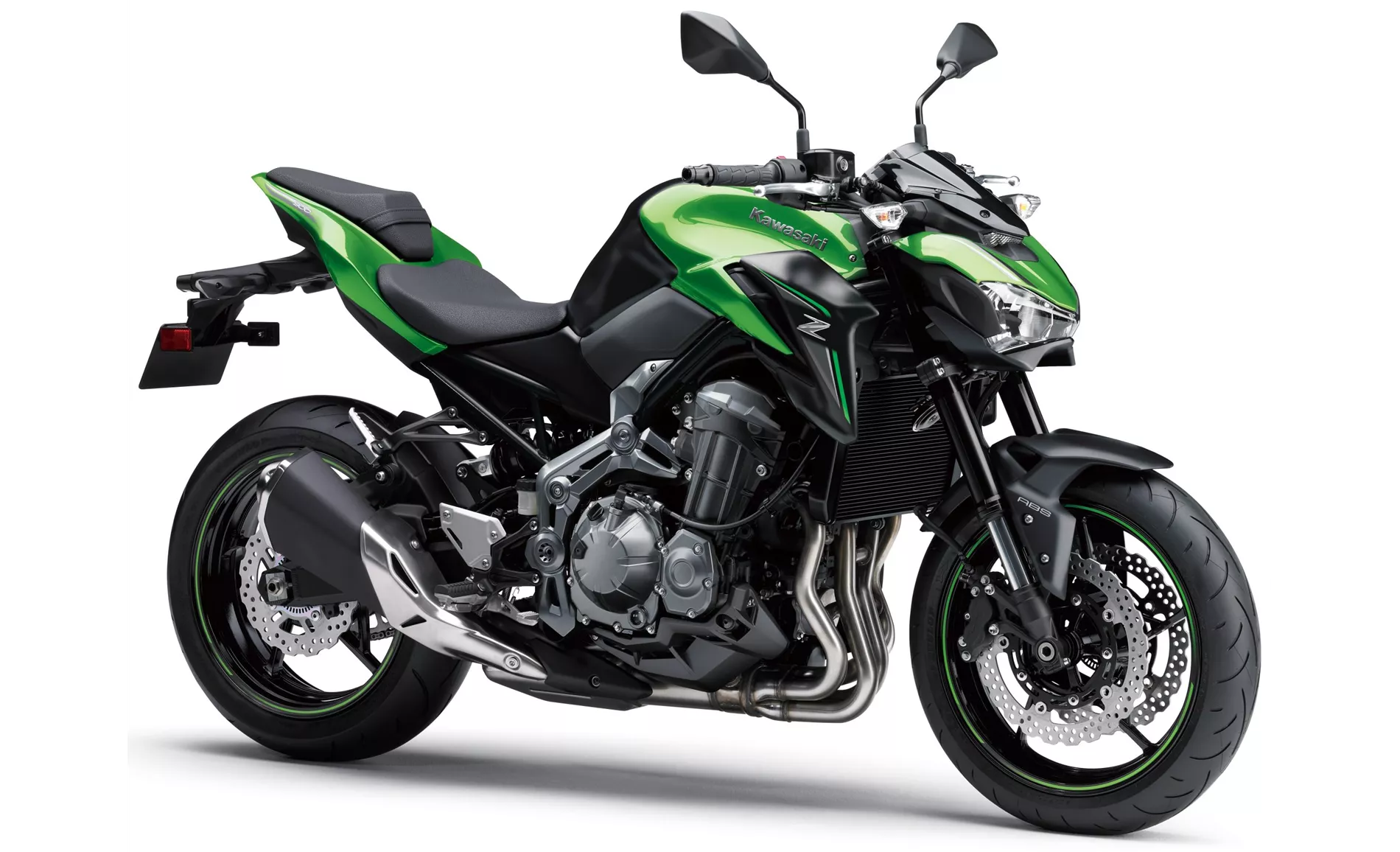
Kawasaki Z900 70kW 2018
On the other hand, the Kawasaki Z650 2021 is powered by an in-line 2-cylinder engine that produces 68.2 HP of power and 65.7 Nm of torque. The engine is also fuel-injected and has a displacement of 649cc. The cooling system is liquid-based, similar to the Z900 70kW. The Z650 has a tubular steel frame, which provides stability and strength. The front suspension is a telescopic fork, and the rear suspension is a swing arm with a monoshock. The suspension can be adjusted for preload. The bike is equipped with double disk brakes at the front, with a diameter of 300mm and double pistons. The braking technology used is petal, similar to the Z900 70kW. ABS is also included as an advanced rider assistance system. The front tire width is 120mm, and the rear tire width is 160mm. The wheelbase is slightly shorter than the Z900 70kW at 1410mm, and the seat height is 790mm. The Z650 has a kerb weight of 187.1kg with ABS.
In terms of strengths, the Z900 70kW 2018 is praised for its smooth engine performance, especially at around 6000 rpm. The brakes are finely controllable, and the bike has a smooth running engine, making it suitable for city traffic. The typical 4-cylinder shriek is present, but it is restrained at low revs. The bike is stable at motorway speeds and offers good handling.
On the other hand, the Z650 2021 is appreciated for its accessible two-cylinder engine, compact dimensions, and low seat height. The chassis is stable, and the bike has a grown-up look. It also features a TFT display with connectivity, adding a modern touch to the bike.
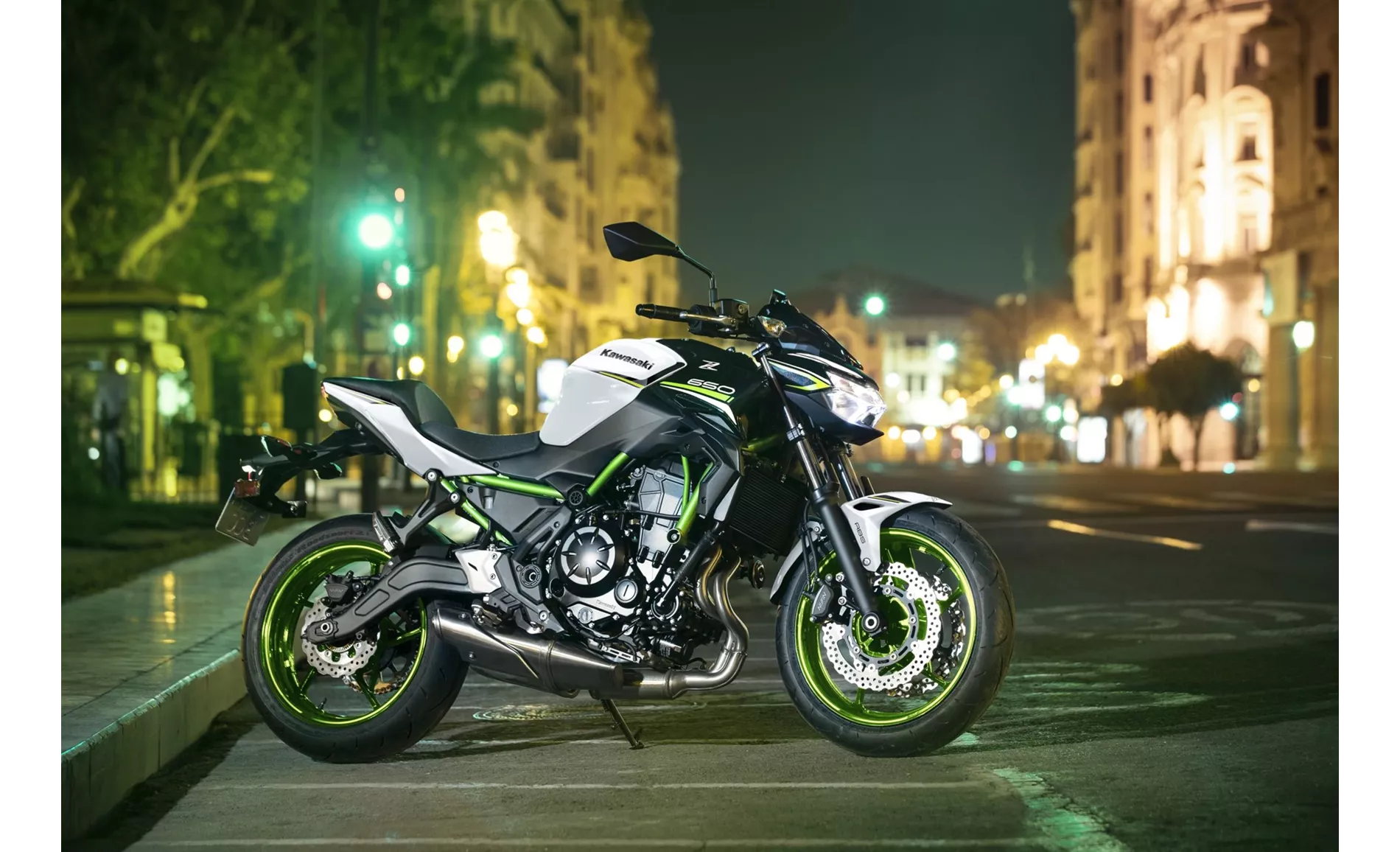
Kawasaki Z650 2021
However, both bikes have their weaknesses. The Z900 70kW 2018 may feel quite small for tall riders, and its weight of 210kg can make acceleration with 48hp rather poor. On the other hand, the Z650 2021 may not be comfortable for tall riders, and its adrenaline level in the saddle is considered lower compared to its competition.
In conclusion, the Kawasaki Z900 70kW 2018 and the Kawasaki Z650 2021 have their own strengths and weaknesses. The Z900 70kW offers more power and a larger engine, making it suitable for those seeking a more powerful naked bike. On the other hand, the Z650 2021 is more accessible in terms of dimensions and seat height, making it a good option for riders who prefer a smaller and more manageable bike.
Technical Specifications Kawasaki Z900 70kW 2018 compared to Kawasaki Z650 2021
Pros and Cons in comparison
Pros and Cons in comparison
Kawasaki Z900 70kW 2018
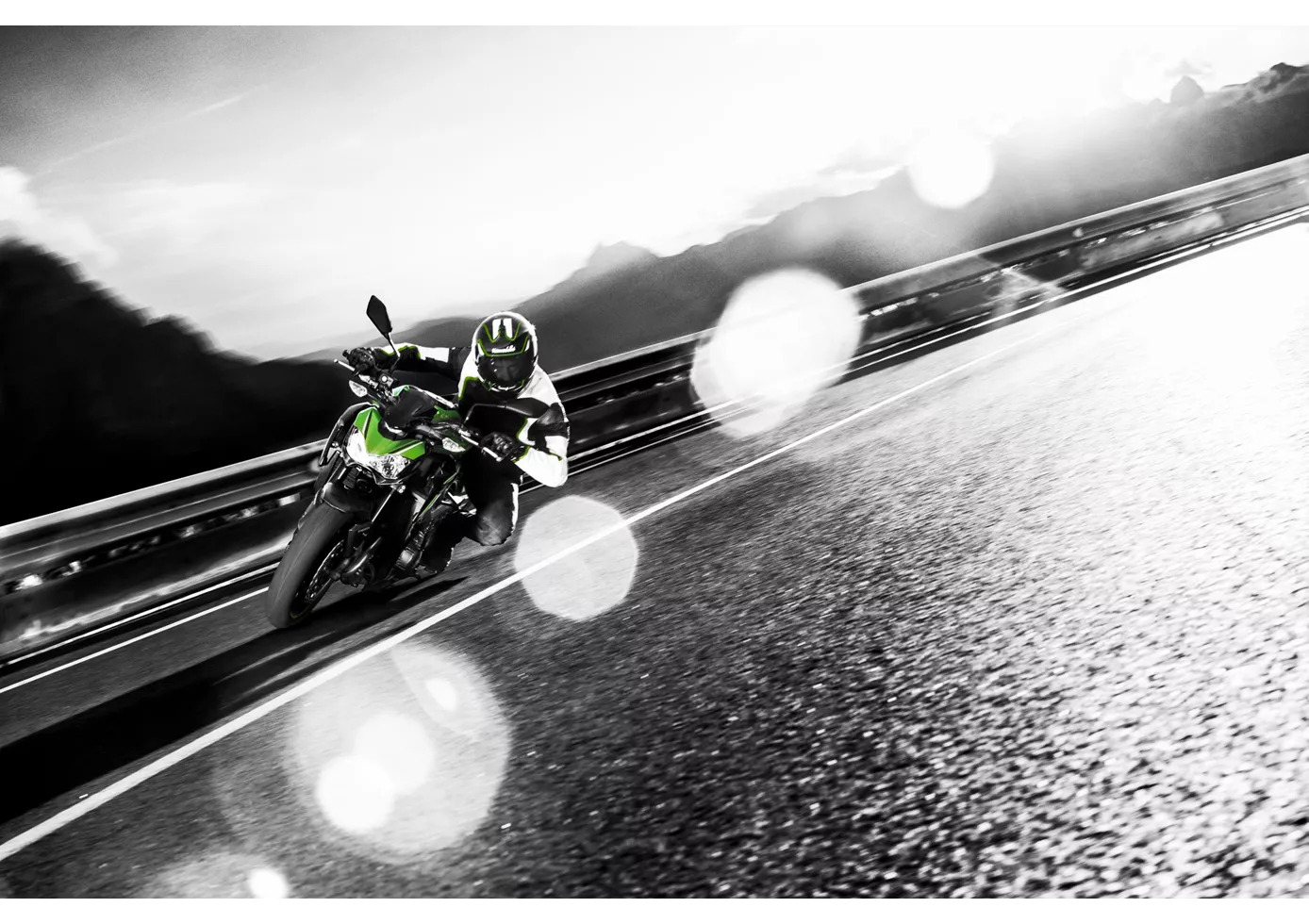
The Z900 is a top entry-level motorbike. Very smooth engine, great brakes and lots of adjustment options on the chassis and levers. The acceleration may be too good for speed junkies, but it's just right for learning. The lack of electronic gimmicks, riding modes and traction control doesn't bother either, but makes the Z900 a good bike to learn the basics of two-wheeled locomotion. A high-quality purist, a real motorbike, even with only 48 hp!
Kawasaki Z650 2021
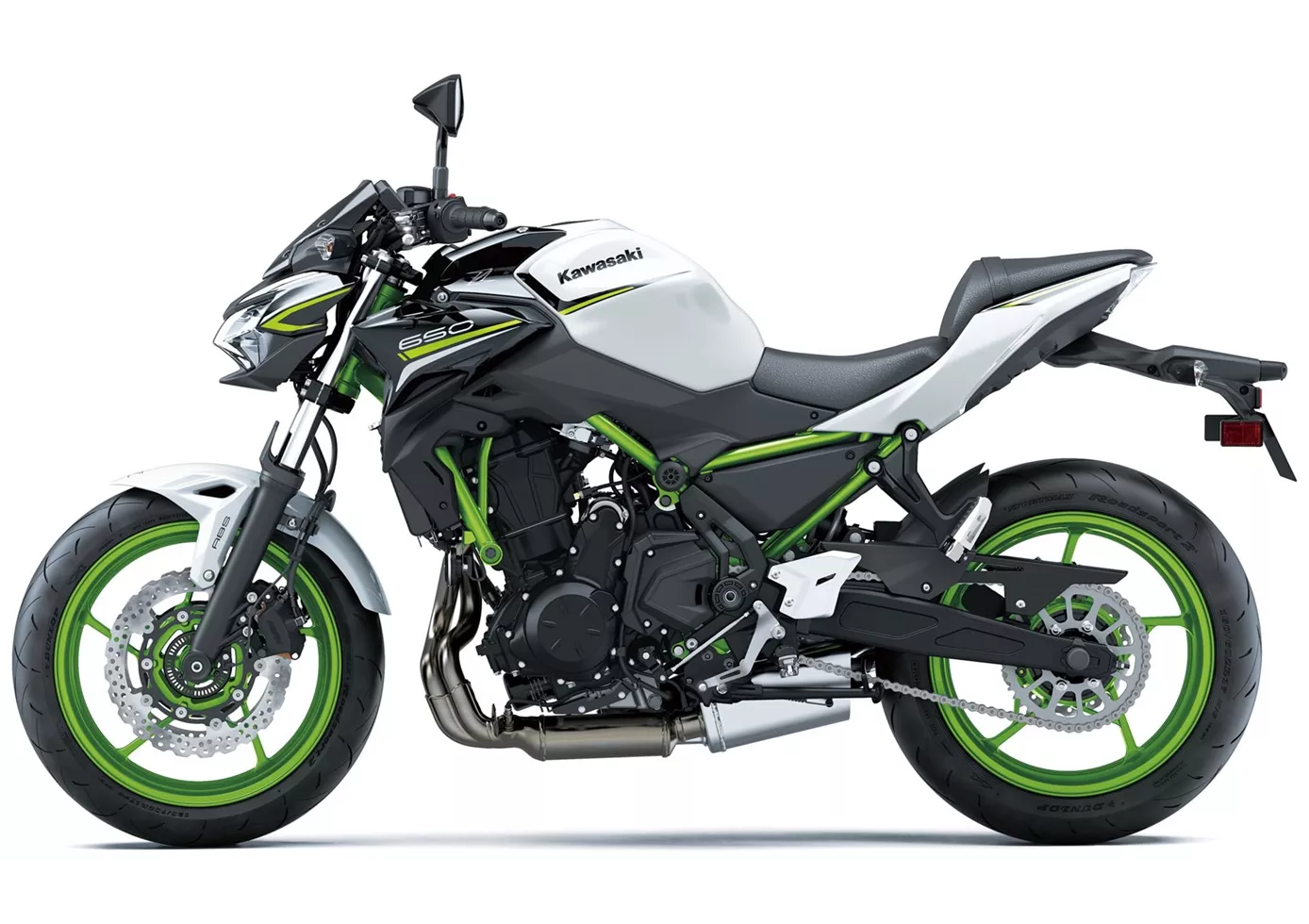
Even in 2021, the Kawasaki Z 650 stands for easy riding with great looks and good equipment. Both seat height and engine are very accessible and will give both experienced riders and newcomers a lot of pleasure. If you are looking for an honest naked bike without any big surprises, this is the bike for you. Due to its compact dimensions, however, you should try it out before buying and perhaps go for the raised seat.
Price Comparison Avarage Market Price Kawasaki Z900 70kW vs Kawasaki Z650
There are a few key differences between a Kawasaki Z900 70kW 2018 and a Kawasaki Z650 2021. In terms of price, the actual average price of a Kawasaki Z900 70kW 2018 is about 30% higher. Compared to Kawasaki Z650 2021 there are less Kawasaki Z900 70kW 2018 bikes available on the 1000PS.de Marketplace, specifically 5 compared to 25. It takes less time to sell a Kawasaki Z650 with 106 days compared to 194 days for the Kawasaki Z900 70kW. Since model year 2018 1000PS.de editors have written 10 reviews for the Kawasaki Z900 70kW and 31 reviews for the Kawasaki Z650 since model year 2017. The first review for the Kawasaki Z900 70kW was published on 11/23/2018 and now has more than 104,300 views. This compares to more than 25,000 views for the first review on Kawasaki Z650 published on 11/8/2016.
